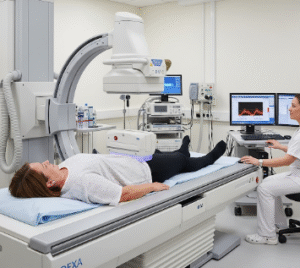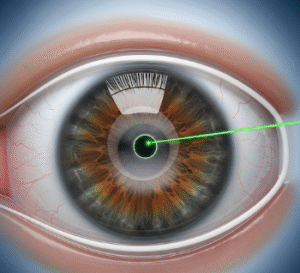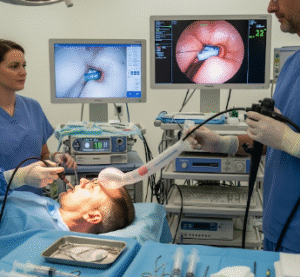Overview
Breathing problems, medically referred to as dyspnea, encompass a range of respiratory difficulties, including shortness of breath, wheezing, or difficulty inhaling and exhaling. These issues may arise acutely, such as during an asthma attack, or develop chronically due to conditions like chronic obstructive pulmonary disease (COPD) or heart disease. In Korea, hospitals and specialized pulmonary and respiratory clinics provide advanced diagnostic tools, therapeutic interventions, and rehabilitation programs to address breathing problems effectively, ensuring optimal lung and overall health.
Key Facts
▶ Prevalence: Breathing difficulties are common among people with respiratory, cardiac, or systemic conditions.
▶ Types: Shortness of breath, wheezing, chest tightness, or rapid breathing.
▶ Causes: Asthma, COPD, infections, heart disease, allergies, or environmental factors.
▶ Associated Symptoms: Cough, fatigue, cyanosis, or chest pain.
▶ Treatment Options in Korea: Pulmonary rehabilitation, medications, oxygen therapy, minimally invasive procedures, and lifestyle management.
What are Breathing Problems?
Breathing problems are any difficulty in inhaling or exhaling that interferes with normal oxygen intake or carbon dioxide elimination. These problems may present acutely or develop gradually depending on the underlying cause.
▶ Acute Dyspnea: Sudden onset, often caused by asthma attacks, allergic reactions, or respiratory infections.
▶ Chronic Dyspnea: Long-term breathing difficulties from COPD, interstitial lung disease, or heart failure.
▶ Exertional Dyspnea: Shortness of breath triggered by physical activity or exertion.
Note: Identifying the type and onset of breathing problems helps physicians determine the urgency and the appropriate diagnostic and treatment plan.
What Symptoms Are Related to Breathing Problems?
▶ Shortness of Breath: Feeling unable to take a full breath.
▶ Wheezing: High-pitched whistling sound during breathing, commonly associated with asthma.
▶ Chest Tightness or Pain: Discomfort during breathing or exertion.
▶ Rapid or Shallow Breathing: Compensatory mechanism for low oxygen levels.
▶ Coughing: Persistent cough, sometimes producing mucus or blood.
▶ Cyanosis: Bluish discoloration of lips, fingers, or toes due to low oxygen.
▶ Fatigue or Weakness: Reduced oxygen supply to tissues affecting energy levels.
▶ Sleep Disturbances: Difficulty breathing while lying down (orthopnea) or nighttime awakenings (paroxysmal nocturnal dyspnea).
What Causes / Possible Causes
Breathing problems can result from respiratory, cardiac, systemic, or environmental factors:
▶ Asthma: Chronic airway inflammation leading to wheezing, coughing, and dyspnea.
▶ Chronic Obstructive Pulmonary Disease (COPD): Emphysema or chronic bronchitis causing airflow limitation.
▶ Respiratory Infections: Pneumonia, bronchitis, or viral infections causing inflammation and obstruction.
▶ Heart Disease: Heart failure, arrhythmias, or cardiomyopathy affecting oxygen delivery.
▶ Allergic Reactions: Severe allergies causing airway constriction (anaphylaxis).
▶ Pulmonary Embolism: Blood clots obstructing pulmonary arteries.
▶ Obesity or Deconditioning: Reduced lung capacity due to excess weight or sedentary lifestyle.
▶ Environmental Factors: Air pollution, smoke inhalation, or occupational exposures.
▶ Neurological or Muscular Disorders: Conditions affecting respiratory muscles or control of breathing.
Note: Prompt evaluation is critical as some causes, like pulmonary embolism or severe asthma attacks, can be life-threatening.
When Should I See a Doctor?
▶ Sudden or Severe Shortness of Breath: Especially with chest pain or fainting.
▶ Persistent Dyspnea: Gradual worsening or chronic difficulty breathing.
▶ Cyanosis or Blue Lips/Fingers: Indicates low oxygen levels requiring urgent attention.
▶ Associated Chest Pain: Could indicate heart or lung emergencies.
▶ Difficulty Breathing at Rest: Severe impairment even without physical activity.
▶ Recurrent Respiratory Infections: May indicate underlying lung disease.
▶ Wheezing or High-Pitched Breathing Sounds: Uncontrolled asthma or airway obstruction.
Tip: Immediate medical attention is necessary for sudden, severe, or life-threatening breathing problems to prevent complications.
Care and Treatment
Management depends on the underlying cause, severity, and frequency of breathing problems:
▶ Medications: Bronchodilators, corticosteroids, antihistamines, antibiotics, or heart medications.
▶ Oxygen Therapy: For patients with low oxygen saturation or chronic lung disease.
▶ Pulmonary Rehabilitation: Exercise, breathing techniques, and lifestyle counseling to improve lung function.
▶ Lifestyle Modifications: Smoking cessation, weight management, and avoiding triggers or pollutants.
▶ Vaccinations: Influenza and pneumococcal vaccines to prevent respiratory infections.
▶ Monitoring: Regular check-ups, lung function tests, and symptom tracking.
Treatment Options in Korea
Medical Evaluation:
▶ Pulmonology Consultation: Comprehensive assessment of respiratory function, history, and risk factors.
▶ Laboratory Tests: Blood tests, arterial blood gases, and infection screening.
▶ Imaging: Chest X-ray, CT scan, or MRI to identify structural or pathological lung changes.
▶ Pulmonary Function Tests: Measure airflow, lung capacity, and oxygen exchange efficiency.
Advanced Therapies:
▶ Minimally Invasive Procedures: Bronchoscopy or interventional therapies for airway obstruction.
▶ Medication Management: Tailored therapy for asthma, COPD, infections, or cardiac-related dyspnea.
▶ Oxygen or Ventilatory Support: For severe chronic respiratory conditions.
▶ Surgical Interventions: Rare cases requiring correction of structural abnormalities, lung resection, or cardiac surgery.
Rehabilitation & Support:
▶ Patient Education: Breathing exercises, symptom recognition, and trigger avoidance.
▶ Follow-Up Care: Regular monitoring to assess improvement and prevent complications.
▶ Specialist Clinics: Korean hospitals provide integrated care combining pulmonology, cardiology, rehabilitation, and patient support services.
Outcome: With timely evaluation and comprehensive treatment in Korea, most cases of breathing problems can be effectively managed, improving oxygenation, reducing symptoms, and enhancing quality of life.













